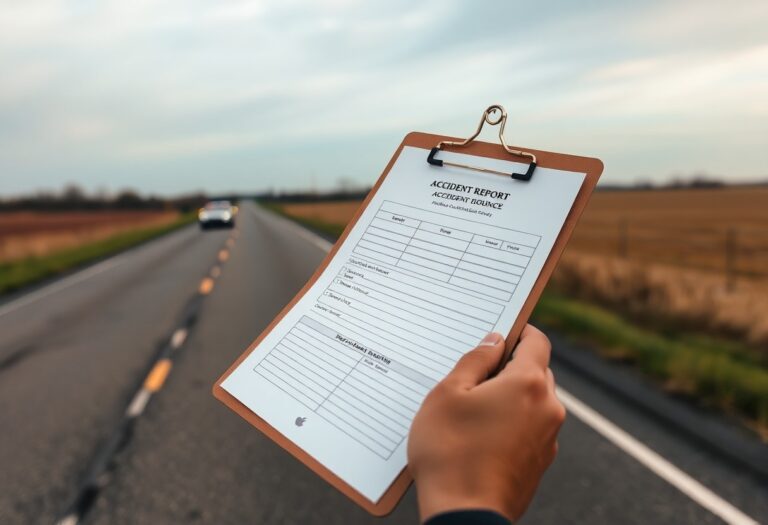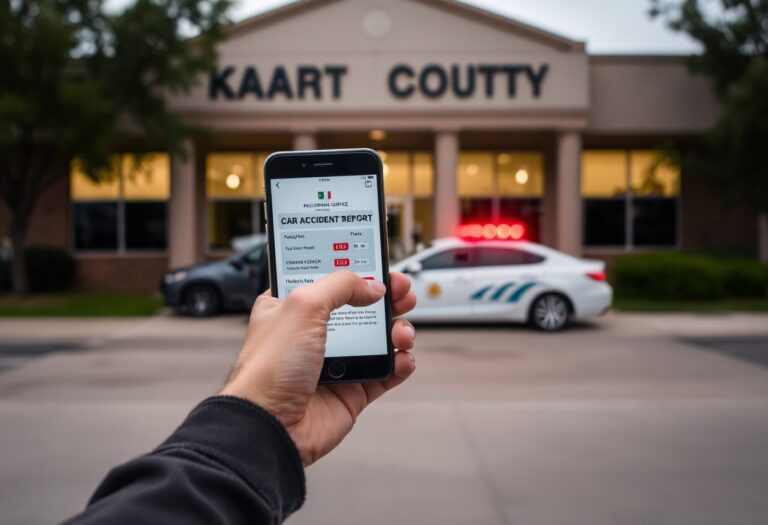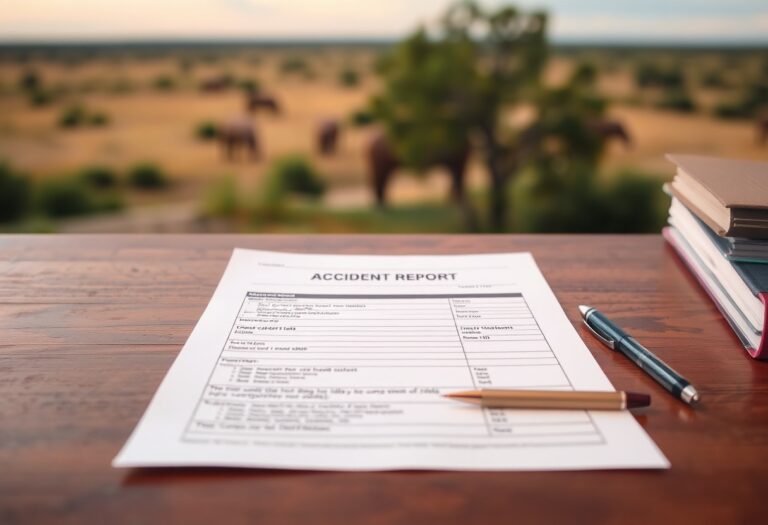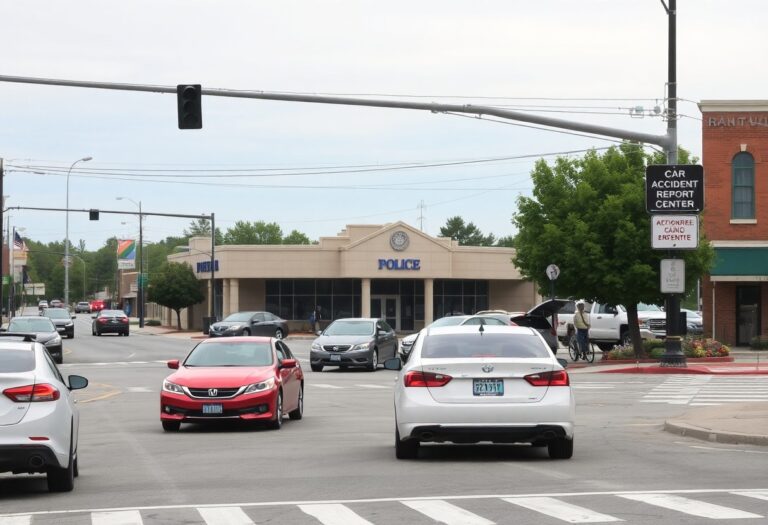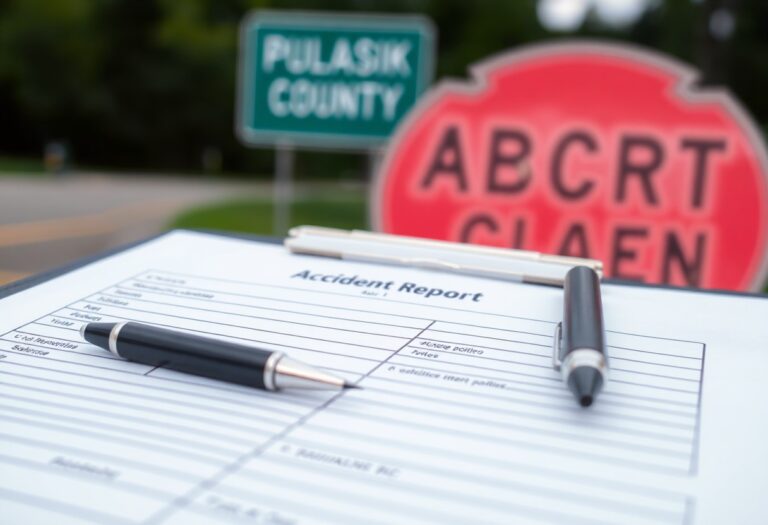With the rising number of accidents in Delaware County, Pennsylvania, understanding how to obtain your crash report is vital for navigating insurance claims and legal processes. You may need this report for various reasons, from securing compensation to understanding the circumstances surrounding an incident. In this post, we’ll guide you through the steps required to access your crash report, ensuring you have the proper documentation at your fingertips to protect your interests.
Navigating Delaware County’s Bureaucratic Labyrinth
Delaware County’s network of government agencies can seem like a complicated maze, particularly after an accident. Knowing the right paths to take is vital for obtaining your crash report efficiently. From local police departments to state-run databases, each agency plays a role in the retrieval process. Understanding how these organizations interact allows you to streamline your efforts and reduce the stress typically associated with accessing these crucial documents.
Key Agencies Involved in Crash Report Retrieval
Several key agencies assist in the retrieval of crash reports in Delaware County, including the Pennsylvania Department of Transportation (PennDOT), your local police department, and the district attorney’s office. PennDOT manages accident records at the state level, while individual police departments handle reports generated from local incidents. Each agency has specific procedures that you must follow to gain access to your desired report.
The Role of Local Law Enforcement in Report Generation
Your local police department plays a pivotal role in documenting accidents and generating crash reports. Officers typically arrive at the scene, assess the situation, and create a comprehensive report detailing the incident, contributing factors, and involved parties. These reports often include witness statements, diagrams of the accident scene, and officer observations, making them vital for insurance claims and legal proceedings.
Without the immediate and thorough documentation by local law enforcement, reconstructing the events of a crash can become challenging. Officers are trained to capture every pertinent detail, which can significantly influence the outcome of liability determinations. For individual cases, the integrity of these reports often directly impacts insurance negotiations and any potential litigation. Therefore, ensuring that your report from local law enforcement is accurate and complete is central to any post-accident resolution processes you may engage in.
What to Expect in a Crash Report: Crucial Elements Demystified
Understanding the components of a crash report can significantly aid your case following an accident. These reports contain vital information not only about the incident itself but also details about those involved. The inclusion of various data points helps in establishing accountability and understanding the circumstances surrounding the event.
Essential Information Included in Reports
Crash reports typically encompass imperative details such as the date and time of the accident, the location, involved parties’ information, vehicle descriptions, and a narrative of the events from law enforcement’s perspective. Additionally, the report might outline injuries sustained and any citations issued, providing a comprehensive view of the situation.
Common Misconceptions About Report Details
Many individuals often hold misunderstandings about what is included in a crash report, leading them to overlook important details. Some believe that all eyewitness accounts are documented or that the police report is final and unchallengeable, which is not the case. These misconceptions can hinder your ability to navigate insurance claims or legal actions effectively.
For instance, while crash reports encompass a wealth of information, they do not include every eyewitness statement collected by the police. If a witness provides an account that conflicts with the report, addressing that discrepancy is imperative for your case. Additionally, the police report may not reflect every detail of the situation, leaving room for further investigation. It’s advisable to review the report thoroughly and seek clarification on any ambiguous sections to ensure your understanding aligns with all the facts available.
A Step-by-Step Guide to Accessing Your Crash Report
Accessing your crash report in Delaware County is a systematic process that requires careful attention to detail. Follow these steps to ensure you obtain your report efficiently:
| Step | Action |
| 1 | Determine which agency holds your crash report. |
| 2 | Gather necessary documentation, including your driver’s license and incident details. |
| 3 | Choose between making an online or in-person request. |
| 4 | Submit your request through the selected method. |
| 5 | Pay any associated fees as required. |
| 6 | Await processing and delivery of your report. |
In-Person vs. Online Requests: Pros and Cons
Choosing how to request your crash report can impact the process significantly. There are distinct advantages and drawbacks to both methods that you should consider.
| Method | Pros and Cons |
| In-Person | Immediate assistance, ability to ask questions, potential to resolve issues quickly. |
| Travel required, possible wait times, limited hours of operation. | |
| Online | Convenient, available 24/7, can submit from anywhere. |
| May encounter website issues, lacks personal interaction, potential delays in processing. |
Fees and Processing Times: What to Prepare For
Costs associated with obtaining your crash report in Delaware County can vary. Fees can typically range from $15 to $25 depending on the agency and method of request. Processing times can also fluctuate—expect about 5 to 10 business days for online requests and sometimes quicker when done in person. To ensure a smooth experience, prepare your documentation and payment method in advance, so you’re not caught off guard while navigating through the bureaucratic process.
The Importance of Accurate Crash Reports in Legal Proceedings
Accurate crash reports play a fundamental role in legal proceedings, providing a detailed account of the incident that can influence the outcome of various cases. Law enforcement officials are trained to document evidence meticulously, and these reports often serve as key pieces of evidence in court. When disputes arise regarding liability, property damage, or injuries sustained, the details captured in these reports can substantiate claims and offer clarity to complex situations. Additionally, inconsistencies or inaccuracies in a crash report can jeopardize your case, underscoring the need for vigilance when assessing its contents.
How Crash Reports Influence Insurance Claims
Certainly, crash reports are pivotal for insurance claims, acting as the primary reference point for insurers assessing damage and liability. The comprehensive details within the report, such as the parties involved, weather conditions, and witness statements, help determine fault. Insurance adjusters rely on this information to evaluate claims effectively and ensure that settlements are fair and justified. Any discrepancies in the report can lead to delays or denials, making it important to verify that all details are accurate and reflective of the situation at hand.
The Role of Reports in Personal Injury Cases
In personal injury cases, crash reports help establish the basis for claims by detailing the events leading to an accident. These reports often include valuable information, such as witness statements and police observations, which can bolster your case significantly. For instance, if another driver is cited for violating traffic laws, this can strengthen your claim for damages. The report’s objectivity can persuade judges and juries, helping you to achieve a favorable resolution for your injuries and losses. Ensuring you have access to the correct report is vital in safeguarding your rights and maximizing your potential compensation.
Secrets to Disputing Inaccurate Information in Your Report
Disputing inaccuracies in your crash report can significantly impact your case outcome. You have the right to challenge wrong details, such as incorrect witness statements or vehicle information. The process can be straightforward, but you must follow specific steps to effectively present your case and ensure the inaccuracies are addressed.
Understanding the Dispute Process
The dispute process begins by formally identifying the errors in your crash report. You’ll typically need to submit your dispute to the agency that issued the report — this could be the police department or a designated traffic authority. Be prepared to provide a detailed explanation of each inaccuracy and outline how it affects your case.
Documentation Needed for a Successful Revision
Gathering compelling documentation is vital for revising your crash report effectively. Essential paperwork includes photographs from the accident scene, witness statements, and any police reports, indicating discrepancies. If available, you may also want to include expert assessments of the accident conditions or vehicle damage to support your claim.
Specific documents can bolster your dispute. For instance, photographic evidence showing the accident scene can contradict misleading report details. Witness statements that corroborate your version of events add weight to your case. In some instances, expert testimonies regarding road conditions or vehicle mechanics could provide an invaluable perspective. Collecting these items ensures your revision request is comprehensive and persuasive, paving the way for an accurate and fair report outcome.
Final Thoughts on Ensuring Your Crash Report is Accurate and Accessible
Ensuring accuracy in your crash report can significantly affect the resolution of your case. Always review the details as soon as you obtain the report—errors can lead to costly delays or mismanaged claims. Engage with your insurance company, legal representatives, or local authorities if discrepancies arise. Utilize resources like the Delaware County Crash Report Request Portal to streamline access. Filing an amendment might seem like a daunting task, but it helps maintain the integrity of your documentation. Lastly, keeping organized records can expedite any future requests or disputes, making your management of the situation more effective.







